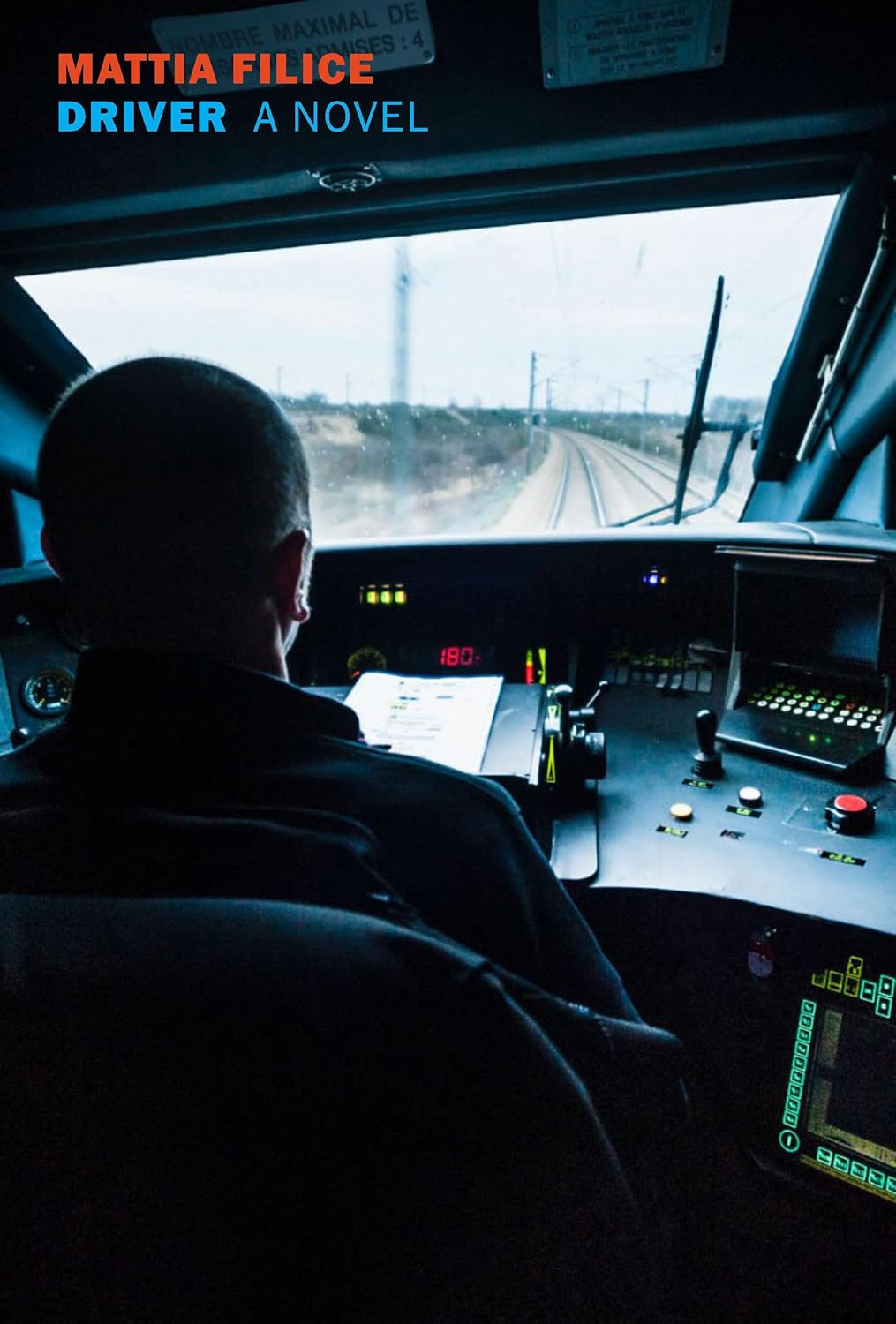 In Europe, we depend on the railway. Essential for our daily commute as well as connecting us with families and friends, lines snake across the Old World and tap into aging arteries. Mattia Filice’s debut novel Driver, translated from the French by Jacques Houis, is an open letter to the French railway, a warts-and-all ode to a means of transportation that endures, evoking the great European “train novels” of the nineteenth century and defying the onward race of modernity.
In Europe, we depend on the railway. Essential for our daily commute as well as connecting us with families and friends, lines snake across the Old World and tap into aging arteries. Mattia Filice’s debut novel Driver, translated from the French by Jacques Houis, is an open letter to the French railway, a warts-and-all ode to a means of transportation that endures, evoking the great European “train novels” of the nineteenth century and defying the onward race of modernity.
In the novel, a cinema projectionist is made redundant and finds a job as a train driver. His choice of this new profession is critical but coincidental—while waiting for a train, inclement weather delays the assigned driver, whose absence paradoxically makes this profession visible to our protagonist (he will be named Driver from then on). Driver thus moves from one invisible, analog profession to another, where applying high speeds (to the film strip, to the train) makes sense of both.
Driver may have stumbled across his new role, but as a train driver, he will learn that being in the right place at the right time takes more than luck—good timing is a skill to be learned. Filice, too, keeps tempo and rhythm by carrying the hulk of Driver in free verse. Some chapters race, others chug, all delight. Endnotes dot the text and invite a second reading for fear of breaking the rat-a-tat rhythm of Filice’s language, which Houis skillfully transposes into English.
For our protagonist, the highly technical jargon of his new profession must also be transliterated. Driver has to “swallow mechanical words covered in grease” and learn to decipher The Reference Book, introduced in capitals and wider kerning to press the point, as well as the “gibberish… snarl of rails” on maps and “hieroglyphs that Champollion/ would have a hard time translating.” As a novel part verse, part prose, part symbols, Driver asks us to pay attention to the text’s visuality, with Filice introducing us to his world through figurative typography, diagrams, and sometimes musical notation that foregrounds the importance of keeping time—drivers must not go any faster than their schedule dictates. Within the carriage of their profession, they are beholden to time and keepers of it, chained to a train schedule, unable to race to important personal commitments, even the birth of a child.
The novel’s humanity and humor come into full force via its multiple “Drivers” and their mutual camaraderie, the shared breaks and accounts of life on the tracks, the solidarity during strikes, and the workers protecting one another from management’s petty scrutiny. Driver swats mosquitos with The Reference Book, watches his colleagues play practical jokes on the passengers, gawps at stories of dalliances in the cabin. He is unable to impart the sheer complexity of his work to a boy who wants to learn the ropes but leaves disenchanted: “Just to accelerate and brake not at all no thanks,” he says. Some irony, given the intensity with which Filice delivers the theory behind his practice (the author was once a train driver himself). We are treated to similar stories from other Drivers, many left tantalizingly half-told as these figures pass through each other’s lives, with breaks at an end and Drivers returning to the tracks once more.
Driver is aware that his profession brings considerable power. He can “stop a train/ a mass of around four hundred and sixty tons/ forty-two thousand kilos/ six thousand times nine/ that my digits stop on a dime.” He is the “master of the doors,” who can cast shade over “the Sun King.” But this godlike ability screeches to a halt when Driver is confronted with a question no god can answer in the negative: “Have you ever killed anyone?” Shocking for almost any line of business, but not here.
Most unlike gods, the Drivers who commandeer their 460-ton steel behemoths are near-paralyzed with this fear of endangering the lives of others. Tales of head-on collisions with animals and humans become part of a cautionary mythos that surrounds the profession, and they remain immediately present with the Drivers’ continued anxiety of missed signals, brakes that stop responding, missing tools. Those unfortunate enough to make mistakes are pilloried by the public. When one driver is held responsible for a head-on collision with another train, a journalist reports:
“Human failure exists
but how can we understand the fact that conscientious people
can make mistakes
if we don’t take into account
the environment in which they live?”
Fame in this line of work is a bad idea. So, who is ultimately at the controls? The novel’s ominously named “Company” certainly hands to its Drivers all of the responsibility but none of the glory. It inducts them into a “school of submission” that demands an “unwavering respect for authority.” Ambition takes precedence over public service. The managers see themselves as operatives, but the stakes are low—in middle management, you can fudge it. As a train driver, you most certainly cannot.
Unionizing is the response to being caught in this broken system. “If you don’t like the Company leave it,” barks one Trainer, to which the narrator quips, “Yes that’s true if you don’t like France you leave it/ if you don’t like Earth you leave it.” Management’s disdain stirs up rebellion in the Drivers—The Reference Book affords them “no freedom of interpretation,” and yet, as the novel progresses, Filice’s Drivers come to flout these rules. Our Driver hops off a train to grab the golf balls he has seen lying abandoned on a semi-regular commute. Roadkill is recovered and cooked. Colleagues improvise to plug air leaks and replace tools. Driver is better served as a nameless knight who lives in his train, both wearing it as a steel suit and wielding it as his weapon. The Reference Book becomes his chivalric code. And the Drivers become heroes to each other.
Driver opens up a world that runs on tracks parallel to our own, oblivious to its operators if not its operations. If Filice’s Drivers are knights, then his trains are mere relics. Prized relics, perhaps, but relics nonetheless, symptomatic of European industry in slow decline. “A second is a long time my mother used to say,” says Driver. These same measurements can be made for modern industrialization, where high-speed railways are being built elsewhere in the world, and Europe’s nineteenth-century systems creak along, vainly holding on to times already past.
Publisher: New York Review Books
Publication Date: October 21, 2025
Reviewed by Zara Karschay
